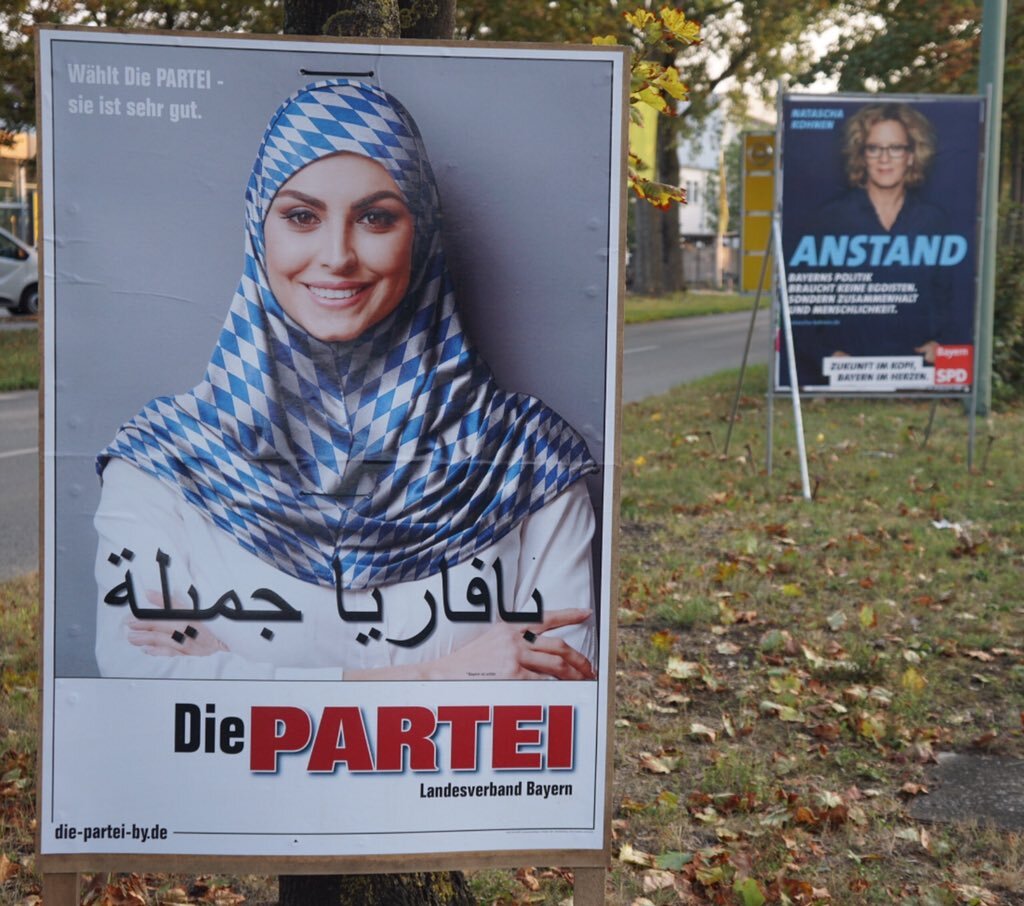Germany's Political Posters
For those Germans who don’t follow politics closely, the first indication of an election will be the overnight arrival of campaign posters. From one day to the next, German streets are festooned with the grinning faces of political aspirants, hoping their friendly countenances and catchy slogans will attract potential voters. It does seem slightly archaic, when some countries spend billions on elections, that voters in Germany will often be introduced to their local candidates via a simple poster, hanging slightly askew from a tree.
This low-tech approach might seem entirely in keeping with the slow, sporadic adoption of technology seen in many parts of Germany. Aversion to technological developments is one thing, but the real reason German political campaigns seem so antiquated is down to a different German trope: rules. State and local laws prevent politicians from spending vast fortunes on their campaigns and regulate the amount of advertising. Often I’m surprised whenever I catch any form of party-political broadcast.
The rules on political advertising also extend to the candidate’s posters, with most following the same format of picture, name, party, and slogan. Some do it better than others. Personally, the best I’ve seen are those from the satirical party Die Partei. They may never win an election, but they are hands down some of the best commentaries on the state of German politics.
It all seems so incongruous with the image Germany projects to the rest of the world. Those outside Germany, exposed as they are to modern German cars or highly engineered industrial products, might assume that it is a nation of early adopters. Those inside Germany can tell you how wrong this picture is, especially given the restrictions on data collection, the Datenschutz. Big data just isn’t as big in Germany. The laws around data collection and storage make it difficult for politicians and their teams to collect quality voting data. Without this information, politicians must rely on older methods to decide how best to spend their small campaign budgets or choose which locations they should focus resources. Traditional polls and surveys are more common, which of course rely on individuals answering a questions honestly.
Without as much information coming in, the German street can be good indicator of how successful a politician might be. During the 2017 general election, as I drove through the small villages of Bavaria, it was sometimes obvious which areas politicians believed they would be most successful. I remember one village that had posters of only one party, the CDU. When I checked the results of that village after the election, I was unsurprised to see that their local CDU candidate won in a landslide. In areas that are contested by more than one party, it might be harder to tell which candidates believe they have the best chance of winning. In large towns or cities, placement of posters becomes a quick indicator of success. Volunteers are vital to a poster campaign, and popular politicians usually have more people available to put them up. Competition for the best locations is fierce and it can quickly become a race against other groups of volunteers to get the best spots. The best placed poster, in the most prominent position, generally suggests the pictured candidate has a good chance of winning.
Of course, the placement of posters is hardly as effective as mining social media for voting data, nor is it entirely logical. It would seem sensible that the best place to put a campaign poster would be at the highest point of a lamppost or tree, making it more prominent and easier for the majority of people to see. However, in Germany, the higher up the lamppost a political poster is found the more unpopular the candidate or party. Politicians have their posters up higher, only when they fear they will be defaced or torn down by angry residents.
Defacing political posters is a crime in Germany, punished with large fines. Even though Germans are generally a law-abiding lot, when it comes to advertising by extremist political parties, they tend to all go a little Che Guevara. The right-wing are especially susceptible to mob justice, in the form of sharpie, spray paint or by simply being torn down. During my first election in Germany, I was surprised (and slightly in awe) to hear people discussing their plans to deface or destroy the ultra-nationalist NPD (National Democratic Party of Germany) posters in their village. The plan sounded like a special forces raid, with ladders, black face paint and the cover of darkness required for the mission to be successful. Sure enough, the next morning, all the posters in the village were either defaced, destroyed or disappeared.
German elections may seem old-fashioned when compared to the flashy showmanship and billions of dollars pumped into the elections of the USA or the slick advertising campaigns and constant focus grouping of British political parties. In reality, the lack of money in the political system, coupled with the protection of private citizen’s data means that German elections retain some semblance of decorum. That decorum does not extend to the defacing of political posters of course. Then again, without data-rich algorithms, how else would politicians assess their pre-election popularity or lack of it.
Image Credit
Photo by Element5 Digital on Unsplash










